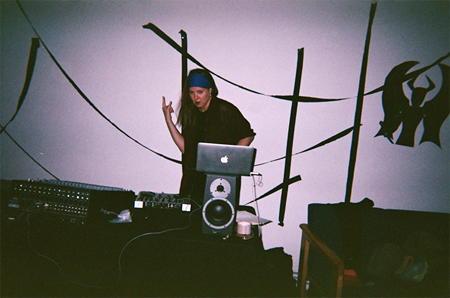Adventures in Art History – pt 7
Reflections on Art, Party, and Business
Last semester I took a Business course – something I never thought I’d do. It was a Selected Topics in Management seminar, with the selected topic being “Managing the Arts.” I was apprehensive about this course, despite having signed up for it months in advance. I had registered for it thinking that some basic knowledge of business practices, especially pertaining to the art world, would be a good thing to have. But as September approached, I began to convince myself I was going to drop it, mainly because business equals numbers and numbers stress me out. Offered by the Sprott School of Business, I imagined a classroom full of suits and briefcases – and I was kind of right. While a third of the class was composed of the characteristic business school types, the rest of the class was a mixed bag of Music, Film, Art History, and Journalism students. We all looked out of place.
“Stakeholder” was one of the first words that came out of my professor’s mouth. My eyes glazed over and I began to google frantically. While Day One was off to a rocky start, a quick look at the syllabus dispelled my fears of having to do math, even simple addition. Over the next few months, the theory-based course engaged me more that I had expected. Not only did I learn what a stakeholder was (really any person or group that can affect or be affected by an organisation), but also about how arts organisations must be able to prioritise and balance both creative and financial sides of the business. We looked at case studies involving museums, galleries, symphonies, dance companies, and festivals – some of which were hugely successful, some just getting by, and others completely failing – and analysed such factors as strategy, marketing, leadership, partnerships, and management. Although these abstract business-y words are cringe-worthy to the arts student, they manifest in situations all around us. Consider, next time you’re at a gallery, museum, or a performance, the logistics of putting something creative together and maintaining it. Someone proposed a creative idea. Someone approved it. Someone made a budget. Someone did or did not follow that budget. Someone hired people. Someone did or did not do a good job of managing these people and making sure tasks were completed. Someone marketed the artistic output through media and advertising campaigns. Someone asked other organisations for help, both in the form of money and useful things. Someone attempted to manage the entire operation strategically.
These are things I had not thought about. These are things your glossy textbooks and the acidic glow of the slideshow in a dark lecture theatre will not tell you. This is practical information that complements everything else we spend four years learning about.

Anyway, enough about business and more about party. It was really my experience of helping organise two very different “art parties” at Carleton University Art Gallery that allowed me to put what I had learned in BUSI 4901: Managing the Arts into practice. In October CUAG hosted A Very Artsy Halloween Party and just last week, at the end of February, the CUAG Art Picnic took place. While the Halloween party was a rambunctious, loud circus of dancing and craft-making, the picnic party was a laid-back showcase of local poetic talent accompanying an array of home-made treats and craft stations. Both parties served the same purpose: to encourage student and community interaction with the gallery and its exhibitions.

Both parties also required everything I mentioned above, including a process of brainstorming and refining ideas, working within a budget, collaboration between groups (in this case, the Visual Arts Club and the Carleton Art History Undergraduate Society as well as CUAG), recruiting and managing volunteers, advertising the events through social media as well as postering, and following the strategic leadership of CUAG. Yes, both parties were fun, as parties should be. But more importantly, I had the opportunity to make sense of the practical business concepts I had learned about.

I don’t know if Managing the Arts will be offered again, but I 100% recommend it to all Art History Students. In fact, it really should be a curriculum requirement. Which I will bring up at the Curriculum Round Table discussion on Monday, March 10 at 5:30pm. Which you should all go to.

Facebook event page for more info:
https://www.facebook.com/events/747001755345277/?fref=ts